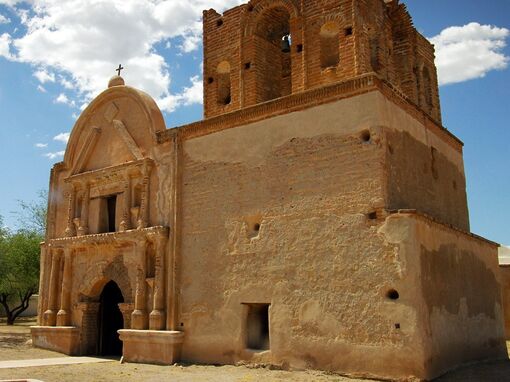We’re getting married—and we couldn’t be more excited to celebrate with all of you. 5-25-25 6pm Join us in the stunning, sun-soaked desert of southern Arizona. We’ve put together all the important details right here—

Amy & Leighton
We’re getting married—and we couldn’t be more excited to celebrate with all of you. 5-25-25 6pm Join us in the stunning, sun-soaked desert of southern Arizona. We’ve put together all the important details right here—
Amy & Leighton
Tumacacori-Carmen
About the Location

We’re so glad you’re here.
In the quiet beauty of southern Arizona, Tumacácori-Carmen holds a special kind of magic, and we couldn’t imagine a better place to begin this new chapter together.
This site has all the details you’ll need as we count down the days—travel tips, local recommendations, and a little glimpse into our journey so far.
Thank you for being part of this moment with us.
With love, A & L
History of the location: Mission San José de Tumacácori, located near present-day Tumacácori-Carmen, Arizona, is a significant historical site reflecting the Spanish colonial efforts to evangelize and settle the Pimería Alta region. Established in January 1691 by Jesuit missionary Father Eusebio Francisco Kino, it stands as one of the oldest missions in what is now Arizona.
Initially named Mission San Cayetano de Tumacácori, the mission was situated on the east bank of the Santa Cruz River, near a native Sobaipuri settlement. Following the Pima uprising of 1751, which led to widespread unrest in the area, the mission was relocated to the west side of the river and renamed Mission San José de Tumacácori. By 1757, a small adobe church had been constructed at this new location.
In 1767, the Spanish Crown expelled the Jesuits from New Spain, leading to the Franciscans assuming control of the mission. Under Franciscan administration, efforts were made to construct a more substantial church to serve the growing community. Construction of the larger church began in the early 19th century but was never fully completed.
The mission faced numerous challenges, including Apache raids and declining native populations, leading to its abandonment around 1848. Recognizing its historical significance, President Theodore Roosevelt declared the site a National Monument in 1908. Today, it is preserved as part of the Tumacácori National Historical Park, offering visitors a glimpse into the complex history of cultural interactions in the region.